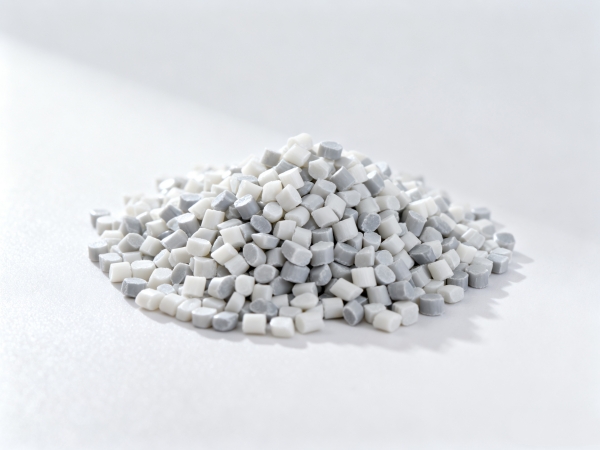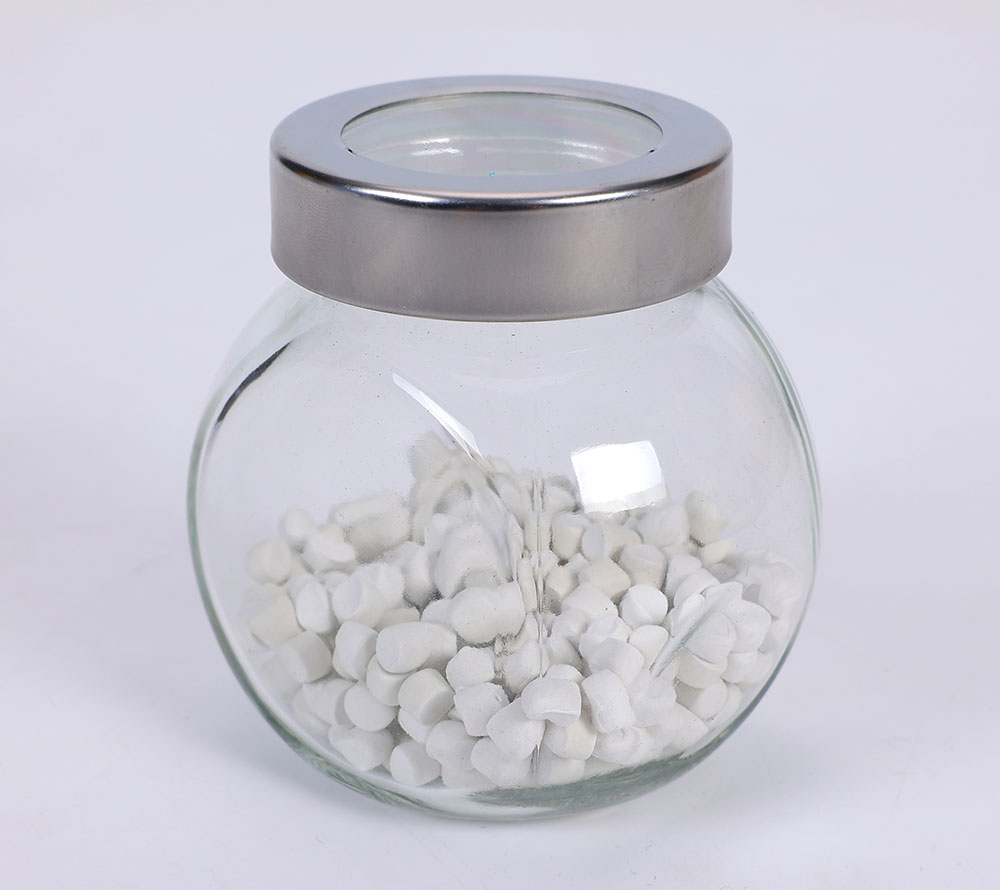Back when I first worked with powdered calcium oxide (CaO) in a rubber compounding plant, storage was a constant headache. Bags would absorb moisture from the air, turn lumpy, and sometimes became unusable before they even made it to the mixer. Not only did this cause waste, but it also introduced unpredictable quality issues.
That’s why I now recommend CaO-80 pre-dispersed masterbatch to newcomers in the industry. It completely changes the way we think about moisture control—cleaner, safer, and much more reliable. Let’s explore why this material has become a favorite for modern rubber production.

What Makes CaO-80 Different from Powdered CaO
CaO-80 is not just powdered calcium oxide; it is a pre-dispersed masterbatch containing 80% active CaO embedded in a polymer carrier. This form makes it much easier to handle, measure, and disperse. Unlike raw CaO powder, which is hygroscopic and messy, CaO-80 stays consistent from the day you open the package until it goes into the mixer.
Excellent Moisture Absorption without Caking
The whole point of using CaO is to absorb moisture and prevent defects in rubber compounds. But with powdered CaO, you often end up with material that has already absorbed too much moisture during storage, becoming clumpy and hard to dose. CaO-80 solves this problem by keeping the active CaO protected in its carrier. It remains free-flowing and fully functional even after long storage periods, so you get the moisture absorption you need—right when you need it—without dealing with lumps or hard spots.
Stable Performance During Storage and Transport
One of the biggest advantages I’ve seen is the long shelf life of CaO-80. It is much less sensitive to ambient humidity, so it stays usable for months in normal storage conditions. This is a huge benefit for large production facilities that keep inventory on hand. It also travels better—no risk of the material degrading on the way from the supplier to your plant.
Easy and Dust-Free Handling for Operators
Anyone who has handled powdered CaO knows it can create irritating dust and requires extra safety measures. CaO-80 is practically dust-free, making it safer for operators and cleaner for the production environment. In my experience, plants that switch to CaO-80 spend less time on cleanup and air filtration, and operators appreciate the reduced exposure to caustic powders.
Consistent Dispersion in Rubber Compounds
Even dispersion is critical for consistent product quality. Powdered CaO can sometimes mix unevenly, causing local cure irregularities or visible defects. CaO-80, being pre-dispersed, blends smoothly into rubber compounds and ensures every batch receives the same amount of active CaO. This consistency is especially valuable for applications that demand high precision, such as automotive sealing parts or technical rubber components.
Reduced Waste and Improved Production Efficiency
Because CaO-80 doesn’t cake or absorb moisture prematurely, far less material is wasted compared to powders. Every bag is fully usable, which reduces raw material loss. Fewer production interruptions from blocked feeders or poor dispersion also mean smoother, more efficient operations. For large-scale plants, these savings add up quickly.
Ideal for Large-Scale Rubber and Plastic Production
CaO-80 is designed with modern mass production in mind. Its dosing accuracy and batch-to-batch consistency make it suitable for automated mixing systems, where reliability is key. Whether you are running tire compounds, industrial hoses, or technical plastic parts, CaO-80 helps ensure your production stays stable and predictable.
Balancing Cost with Long-Term Benefits
At first glance, CaO-80 may cost more per kilogram than powdered CaO. But when you factor in reduced waste, fewer defects, cleaner work environments, and lower maintenance requirements, the total cost of ownership is often lower. I’ve seen many companies recover the price difference simply through better production yield and reduced downtime.
From my own experience, CaO-80 has taken away most of the frustrations we used to face with moisture control in rubber compounding. It stays free-flowing, stores well, and delivers exactly the performance you expect when you add it to a batch. For anyone still struggling with caked CaO bags or inconsistent moisture control, switching to CaO-80 is one of the simplest ways to improve process stability, product quality, and overall plant efficiency.
 cwc@jxbh-masterbatch.com
cwc@jxbh-masterbatch.com Jiaxing Beihua Polymer Auxiliaries Co., Ltd. / Shanghai Crystal Wells Chemical New Materials Co. Ltd. / Shanghai Crystal Wells Chemical New Materials Co.
Jiaxing Beihua Polymer Auxiliaries Co., Ltd. / Shanghai Crystal Wells Chemical New Materials Co. Ltd. / Shanghai Crystal Wells Chemical New Materials Co.

































